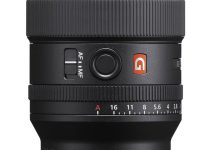Single-handed gimbals provide solo camera operators a compact, fast solution for stabilized filmmaking on the go but with so many offerings on the market which one is right for you?
That’s a reasonable question, especially if you don’t have much prior experience with single-handed stabilizers and generally don’t know where to start. Finding a viable option could be a daunting task, indeed.
Luckily, filmmaker Peter Lindgren has put together an insightful video where he compares two of the most popular gimbals out there – the DJI Ronin-S and Zhiyun Weebill-S. Let’s take a look.
Size
With a weight of 2.04lbs, the Weebill-S is lighter than the Ronin-S and it’s compact size makes it easy to slip into a camera bag or throw into a backpack. The DJI Ronin-S is taller, bulkier and lacks the hard locks on each of the three axes that makes securely packing away the Zhiyun Weebill-S a breeze.
Balancing
Both gimbals have a tool-less adjustments that make balancing quick and easy. Fine-tuning the balance of the DJI Ronin-S is slightly easier but it should be noted that the locking motors on the Weebill-S can also aid in isolating the balance of each axis individually.
Complete balance of all axes (Pitch, Roll, Yaw) is absolutely key to the performance of any gimbal big or small.
Payload
Not only does the DJI Ronin-S have a sturdier feel to it than the Zhiyun Weebill-S, DJI also publishes their maximum capacity at 7.94 lbs. Zhiyun lists the capacity of the Weebill-S to be for ‘camera/lens combos such as the Canon 5D Mark IV with a 24-70mm zoom lens’. That puts its capacity somewhere around 4 lbs so the Weebill-S is definitely better suited for lighter camera/lens combos.
That isn’t a negative for the Weebill-S though. Lighter setups are better when using a single-handed gimbal. You will definitely feel it in your arms if you’re carrying around a maxed-out Ronin-S for hours.
Mobile User Interface
The gimbals are both configured and controlled via a smartphone app. If security is a concern (and hopefully it is), Zhiyun’s app requests permissions for information un-related to operating the gimbal whereas DJI only requests access to your camera, storage, and location information.
Both apps are capable of reading your smartphone’s motion data to remotely control the direction the camera is facing. This can be very useful for smooth panning and tilting when the camera is static, or for compound shots that require a second operator.
DJI’s app takes the lead in performance since Zhiyun’s app is less responsive, tends to jitter, and sometimes loses its orientation. DJI’s motion sync function is smooth, consistent, and eerily life-like.
DJI also incorporates an auto-tune function within their app that sets the optimum power level on each motor to provide maximum stabilization. Tuning a gimbal is vital to eliminate micro-vibrations, and to keep the camera locked on target while the operator is in motion. DJI makes it as easy as clicking a button.
Handling
One neat trick of the Weebill-S’s design is the quick release tripod base that doubles as a top handle for underslung mode. There are 3rd party top handles for the DJI Ronin, but it’s another part you have to bring along. It’s nice to just have it there for you when/if you need it.
Overall the performance of both gimbals while walking and running in their standard modes is very similar, but all gimbals require the operator to practice and understand how best to move themselves around to get the smoothest shots possible.
However, the DJI Ronin wins (again) in sport mode. It’s higher load capacity, auto-tuned motor calibration, and stronger motors let it hold tight when you’re moving quickly. The Weebill-S struggles to keep pace (at least as it is presented in this video).
Peter is attributing this to a follow delay but to me, it looks more like the tilt motor isn’t strong enough to counter the force with which he is moving the camera around. This could be a dealbreaker if you’re running with or holding the gimbal out of a moving vehicle on a bumping road.
Conclusion
Both gimbals are capable of producing terrific results in the hands of a good operator. If you’re on the go, the Weebill-S with its compact size might be better. However, if you’re looking for a workhorse tool to use in your professional work the DJI Ronin-S is probably your best bet.
With a price of $549, the DJI Ronin is currently $100 more expensive than the $439 Weebill-S for the essentials kit which isn’t really that substantial especially when you feel the difference in quality.
Make the choice that best fits your needs, and remember these are just tools to help expand your creativity.
Which one do you think would be the best for you?
[source: Peter Lindgren]
Order Links:
DJI Ronin-S Handheld Gimbal Stabilizer (B&H, Amazon)
Zhiyun-Tech WEEBILL-S Handheld Gimbal Stabilizer (B&H, Amazon)
Disclaimer: As an Amazon Associate partner and participant in B&H and Adorama Affiliate programmes, we earn a small comission from each purchase made through the affiliate links listed above at no additional cost to you.


